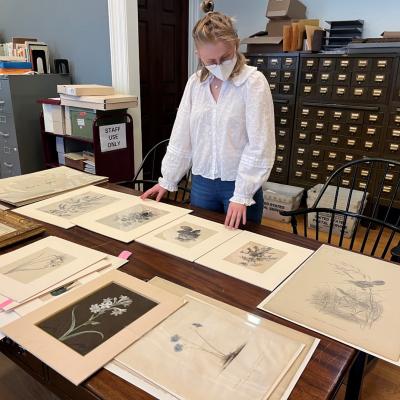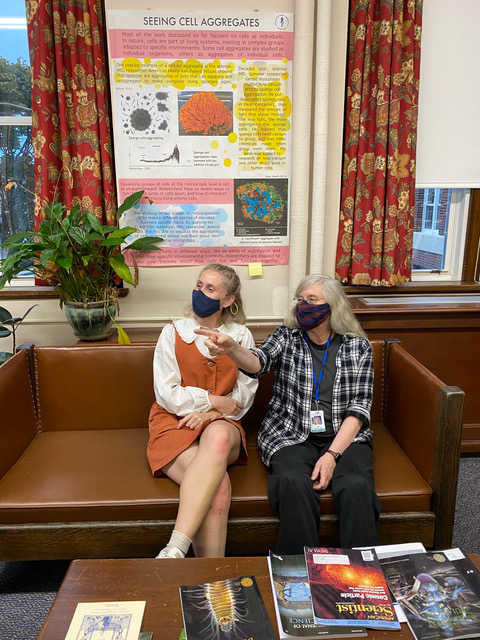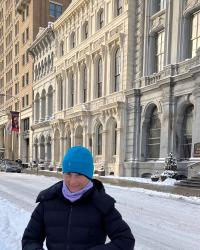Bio & Society grad student returns to Arizona after a fruitful experience on the East Coast!
Anna Clemencia Guerrero, a PhD candidate in the Center for Biology and Society (henceforth CBS) and professional illustrator, has just finished her first big East Coast tour. For the past year and a half, she worked on a set of public exhibits at the Marine Biological Laboratory (henceforth MBL) in Woods Hole, MA. Those exhibits were part of a National Science Foundation funded grant with CBS director Dr. Jane Maienschein exploring the history of images in cell biology. You can read more about the grant and project here.
One exhibit, “Seeing Cells” shows how historical images of cells inspired new scientific theories and questions, following how those theories and questions go on to influence future images and cell research. That exhibit encourages viewers to ask: “What is a cell?” and “How do we know?” The second exhibit, “Seeing Life,” highlights the diversity of key people and their scientific research from the early days of the MBL, including Nobel Prize winners Thomas Hunt Morgan and Albert Szent-Györgyi, microscopy pioneer Shinya Inoué, and Cornelia Clapp, the first scientist to arrive at the MBL in 1888. The exhibits opened with a public reception and viewing on July 22, 2022.
Before the trip, Guerrero was apprehensive about living far from family and Arizona, her home since birth. However, she found the new (colder, wetter) surroundings generative for thinking. Though some might consider the trip a distraction from dissertation work, Guerrero is convinced that without her lengthy “side-quest,” her dissertation would be, plainly, way less good. Guerrero was surprised at the pain of saying goodbye to Woods Hole, but she looks forward to returning in the future.
After her stay on The Cape, Guerrero headed South to complete the inaugural Jacques Barzun Fellowship for Collections & Programming in the History of Biology at the American Philosophical Society (henceforth APS) in Philadelphia, PA. Part library and part museum, the APS is associated primarily with early Americanist history. However, the majority of the APS’ holdings are within the realm of history of science. The Barzun Fellowship was invented for early-career historians to learn how archive materials are processed, while encouraging them apply their subject-matter expertise to act of processing.
Professional archivists trained Guerrero, and then she processed the papers of 20th century zoologist, Emil Witschi. Born in Switzerland, Witschi moved to the United States in the 1920s to conduct zoological research about sexual differentiation and the development of vertebrates at the University of Iowa. Guerrero had gained a lot of knowledge about 20th century cell and developmental biology at the MBL and was happy to apply it to her archival work.
Guerrero also got to apply her skills as a professional scientific illustrator. She worked with the APS’ Education Programs to design and produce an original illustration for their upcoming museum exhibit about women in science, planned for 2023. The illustration features the contributions of three 20th century astronomers: Annie Jump Cannon, Henrietta Swan Leavitt, and Cecilia Payne. Guerrero gave a virtual talk about her work at the APS, called “On the Other Side of the Archive: Lessons from Processing the Emil Witschi Papers” which you can view here. She found her cohort of fellows and the city of Philadelphia to be welcoming and refreshing after two years of general isolation. And speaking of welcoming, the APS wants to connect with more historians of science! Please check out their collections, programs, and fellowships here.
Guerrero highly recommends that graduate students work in an unfamiliar place, with unfamiliar people, even if that work is not their usual focus. Guerrero also recommends planning this work during some time other than a global pandemic.


